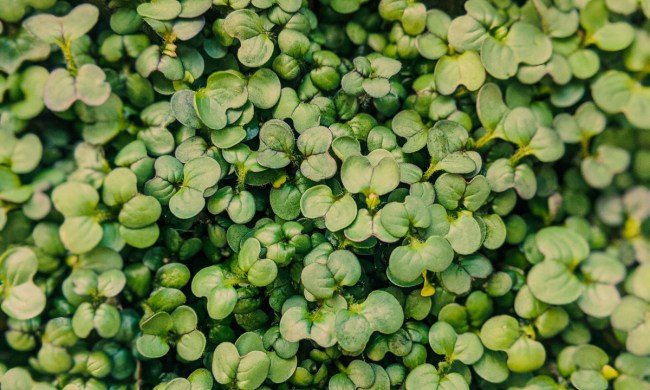Do you ever feel like we have a habit of trying to reinvent the wheel? Instead of competing in marathons, people now run ultra-marathons. There are multiple kinds of yoga, from traditional vinyasa to hot yoga, and there’s no shortage of coffee flavors.
Innovation can be a good thing. It keeps us challenged, excited, and on our toes. But, when it comes to fitness, it can prevent us from plateauing.
However, these days, people are even reinventing water — and we’re not just talking about La Croix. Alkaline water has made its way onto shelves and grocery stores. The water has higher pH levels than regular H2O. Proponents say the higher acidity helps neutralize the acid in your body and can help protect you against diseases, including cancer.
That’s the marketing plug, at least. However, is alkaline water really better for you than your run-of-the-mill drinking water? Let’s explore.

Price
Regular water: It’s (basically) free
Turn on your sink, and regular water flows out. In short, regular H2O is free, minus whatever you may need to pay for your water bill. As long as you have access to clean drinking water, it’s a cost-effective way to quench your thirst.
Alkaline water: It will cost you
Because alkaline water isn’t au-natural, someone needs to put the acid in it. As a result, it comes with a price tag, ranging anywhere from about $7 for a 15-pack to more than $20 for a 12-pack of Essentia or SmartWater (a favorite of Jennifer Aniston).
Winner: Regular water
Not all alkaline water will break the bank, but the bottom line is, it’s not free like regular water. Put one in the win column for run-of-the-mill H2O.
Health
Regular water: Is it really full of toxins?
Regular tap water has something of a stigma. People may think it’s full of toxins.
Though some may splurge on expensive water purification systems that may cost $2,000 and up, the Environmental Protection Agency says 90 percent of water is safe to drink from the tap. (If you have an extremely compromised immune system or the water in your area is known to have high lead and radon levels, you should consider it. You can also get a water purification pitcher for less than $20).
Regular, clean drinking water has many health benefits, according to experts: It helps you digest food, protects your organs and tissues, stabilizes your heartbeat, and keeps blood pressure at normal levels, to name just a few.
Alkaline water: Is it actually healthier?
A few studies indicate that alkaline water may have some health benefits. For example, a 2016 study of 100 healthy adults found that people had more efficient blood flow after a tough workout if they drank alkaline water instead of regular purified water. Another suggested it may be a good complementary treatment for hypertension, diabetes, and high cholesterol.
Winner: Regular water
Though there is some evidence that suggests alkaline water may have some health benefits, the studies are small. Part of this is because it hasn’t been around as long as regular water, which we’ve known about since the beginning of time. Since we can only go by what we know, regular water takes this round, too.
Accessibility
Regular water: One of the most accessible resources in the developed world
In the developed world, most of us are lucky to have easy access to clean drinking water. All you have to do is turn the knob on your sink, and it comes flowing out. Sure, you can go to the store and buy bottled water, but you don’t have to.
Alkaline water: You can usually find it
Alkaline water comes in jugs or bottles. It’s not necessarily hard to find; most grocery stores have it, or you can order it online. However, it involves a few clicks or a trip to the market. Sometimes, it may be out of stock, something you don’t need to worry about with regular drinking water. Shipping delays may happen, too.
Winner: Regular water
Though finding alkaline water isn’t akin to finding a needle in a haystack, it’s simply not as accessible as regular water.
Reading this, you might think it’s a slam-dunk for regular water. Based on what we know about alkaline and regular water, the bottom line is that there’s no way around it: The answer to “is alkaline water really better?” is no. The benefits of regular water, such as its effect on our digestive systems, are well-researched. However, that doesn’t mean you shouldn’t try alkaline water. Maybe it will make you feel more energized, but don’t expect it to protect you against cancer. If you’re concerned about your risks for chronic diseases, talk to your doctor about science-backed prevention methods.
BlissMark provides information regarding health, wellness, and beauty. The information within this article is not intended to be medical advice. Before starting any diet or exercise routine, consult your physician. If you don’t have a primary care physician, the United States Health & Human Services department has a free online tool that can help you locate a clinic in your area. We are not medical professionals, have not verified or vetted any programs, and in no way intend our content to be anything more than informative and inspiring.



